As an artist, you know the right tools can make all the difference in your work. And when sketching, nothing is more important than the pencil. It’s the tool that allows you to bring your ideas to life, capture the essence of a subject, and express yourself in beautiful and meaningful ways.
But with so many options, knowing which pencils are the best for sketching can be hard. That’s why we’ve put together this guide to the best pencils for sketching so you can choose the perfect tool for your artistic needs.
From traditional wooden pencils to mechanical and colored pencils, there are various options. Each type of pencil has unique qualities and benefits, and knowing which is right for you is important.
Whether a beginner or an experienced artist, this guide will help you find the perfect pencil for your sketching needs. So let’s dive in and explore the world of pencils and discover the tools that will take your artwork to the next level.
Key Takeaways
- A pencil is an important tool for artists and has many different types.
- Traditional wooden pencils offer a tactile experience and a variety of grades, while mechanical pencils are versatile and allow you to switch between thicknesses easily.
- Colored pencils offer a wide range of hues and shades for creative expression and can be blended and layered for endless possibilities in shading and texture.
- Graphite and charcoal pencils are great for creating a range of values and textures in sketching, and technical drawing pencils are excellent for precision and detail work. The right tools can make a huge difference in your artwork.
Traditional Wooden Pencils
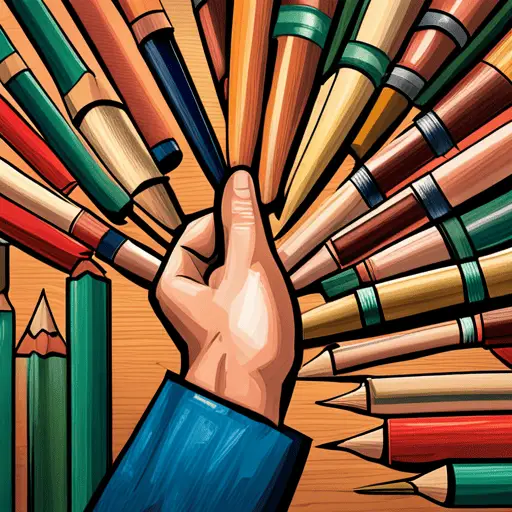
You’ll love the feel of a traditional wooden pencil in your hand as you sketch away! There’s something special about the tactile experience of holding a wooden pencil and how it glides across the page.
When sketching, traditional wooden pencils are a classic choice artists continue to favor. One of the great things about wooden pencils is the variety of pencil grades available. From soft and smudgy 6B pencils to harder, more precise 2H pencils, there’s a grade for every sketching need.
And don’t forget the importance of sharpening techniques – a well-sharpened pencil can make all the difference in the world. Whether you prefer a classic handheld sharpener or a mechanical one, finding the right technique can enhance your sketching experience.
Now, let’s move on to the next section about mechanical pencils.
Mechanical Pencils
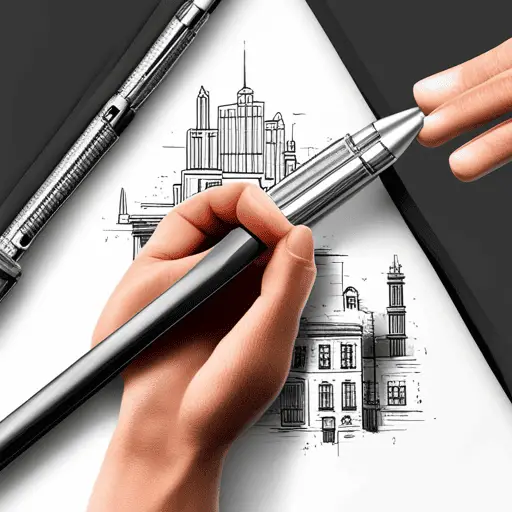
Regarding sketching, mechanical pencils are the Swiss Army knife of the artist’s toolkit. They’re capable of effortlessly switching between thicknesses like a chameleon changing colors. These versatile pencils are perfect for artists who want to switch between fine lines and bold strokes without having to switch pencils.
The lead can be adjusted to the desired thickness with a simple click, making it easy to experiment with different line weights.
But not all mechanical pencils are created equal. Consider the lead hardness and grip design to find the best one for your sketching needs. A harder lead is ideal for detailed work, while a softer lead is perfect for shading. As for grip design, some pencils have a rubberized grip to prevent slipping, while others have a knurled metal grip for a more secure hold.
So whether you’re a professional artist or starting out, a mechanical pencil is a must-have tool for your sketching arsenal.
Moving on to the next section about colored pencils, let’s explore how they can bring your sketches to life.
Colored Pencils
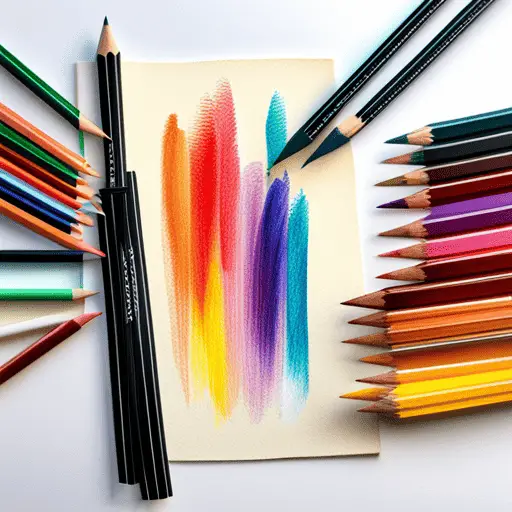
Are you looking to add some vibrant colors to your artwork? Look no further than colored pencils! These versatile tools offer various hues and shades to express creativity. Plus, they’re blendable and layerable, allowing for endless possibilities in shading and texture. Whether you prefer watercolor or oil-based formulas, colored pencils are essential for any artist’s toolkit.
Vibrant Colors for Creative Expression
To unleash your creative potential, try out these pencils with vibrant colors. Whether you’re experimenting with abstract sketching techniques or using pencils for mixed-media artwork, these pencils will add a pop of color and help bring your vision to life.
Here are five vibrant pencils to get you started:
- Prismacolor Premier Colored Pencils: With a range of 150 colors, Prismacolor Premier pencils are perfect for artists who want to experiment with various shades. These pencils are also known for their soft, thick cores that allow for easy blending and shading.
- Faber-Castell Polychromos Colored Pencils: These pencils are known for their lightfastness and durability, making them a great choice for artists who want their work to last. The Polychromos line also has a range of vibrant colors perfect for creative expression.
- Caran d’Ache Luminance Colored Pencils: These pencils are known for their rich, vibrant colors and smooth application. They also have a wax-based core that allows for easy layering and blending, making them a popular choice among artists who want to create intricate, detailed artwork.
- Derwent Inktense Colored Pencils: These pencils are unique in that they can be used dry like traditional colored pencils but can also be activated with water to create intense, vibrant colors. They’re perfect for artists who want to experiment with mixed media techniques.
- Staedtler Ergosoft Colored Pencils: These pencils have a soft, comfortable grip that makes them easy to use for extended periods. They also have a range of bright, vibrant colors perfect for adding color to your artwork.
You can add depth and dimension to your artwork with these vibrant pencils. But if you’re looking for more ways to take your sketches to the next level, check out these blendable and layerable pigments.
Blendable and Layerable Pigments
Make your artwork come to life with the magical touch of blendable and layerable pigments – these little wonders will take your creativity to new heights and add a whole new dimension to your work. With the right blending techniques and layering effects, you can achieve stunning results that are sure to impress. Whether you’re a professional artist or just starting out, having pencils with blendable and layerable pigments is essential to creating masterpieces.
To help you start your artistic journey, we’ve compiled a table showcasing some of the best pencils for blending and layering. Take a look below to see which pencils are the best fit for your needs:
| Pencil Brand | Pigment Type | Blendability | Layering Ability |
|---|---|---|---|
| Prismacolor | Wax-based | Excellent | Excellent |
| Derwent | Oil-based | Good | Good |
| Faber-Castell | Watercolor | Excellent | Excellent |
| Caran d’Ache | Wax-based | Excellent | Excellent |
With these pencils, you’ll be able to create artwork full of depth, texture, and dimension. Whether you’re looking to create a realistic portrait or an abstract piece, the blendable and layerable pigments of these pencils will help you achieve your desired effect. Plus, with options available in watercolor and oil-based formulas, you can choose the perfect medium for your artistic vision. So, let’s dive into the next section and explore these options further.
Available in Watercolor and Oil-Based Formulas
Immerse yourself in a world of vivid colors and rich textures with watercolor and oil-based pencils, offering a range of options to bring your artistic vision to life. When choosing between watercolor and oil-based pencils, there are a few things to consider.
Watercolor pencils are perfect for creating beautiful washes and a sense of transparency in your work. They’re also water-soluble, so you can blend and mix colors together, creating a wide range of shades and hues.
On the other hand, oil-based pencils are great for creating highly pigmented and saturated colors, perfect for creating bold and striking artwork. They also have a longer lifespan and are more durable than watercolor pencils.
Furthermore, both watercolor and oil-based pencils have excellent blending capabilities, allowing you to create smooth transitions between colors. With watercolor pencils, you can use a wet brush to blend the colors together, while with oil-based pencils, you can use a solvent to create a similar effect.
However, remember that oil-based pencils require more care regarding storage and handling, as they can easily break or melt if exposed to heat.
Overall, both types of pencils offer unique advantages and are worth trying to see which suits your style best.
If you’re looking for a more traditional approach to sketching, graphite, and charcoal pencils are another great option. They can create a wide range of tones and textures, perfect for creating lifelike sketches and portraits. But before we delve into that, let’s look at some of the best graphite and charcoal pencils on the market.
Graphite and Charcoal Pencils
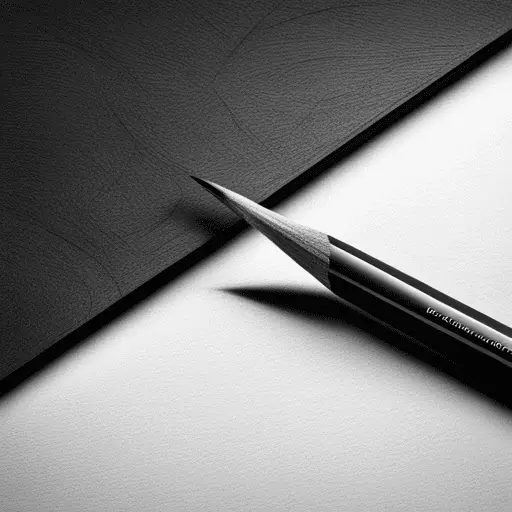
Graphite and charcoal pencils are essential tools for creating a range of values and textures in sketching. When choosing the right pencil for your sketching style, weighing the pros and cons of charcoal vs. graphite is important.
Graphite pencils are great for detailed work and can create a wide range of values from light to dark. They also erase easily and are less messy than charcoal. However, graphite can sometimes look flat and lacks the depth and richness of charcoal.
On the other hand, charcoal pencils are perfect for creating dramatic, dark marks and adding texture to your sketches. They can produce a wider range of values than graphite, and their dark marks blend easily. However, they can be messy and more difficult to control than graphite.
Ultimately, the choice between charcoal and graphite comes down to personal preference and the sketching style you want to create.
As you move on to the next section about technical drawing pencils, remember that the right tools can make a huge difference in your artwork. Technical pencils offer precision and control and are great for creating fine details and crisp lines. With the right combination of pencils, you can take your sketching to the next level and create artwork that truly stands out.
Technical Drawing Pencils
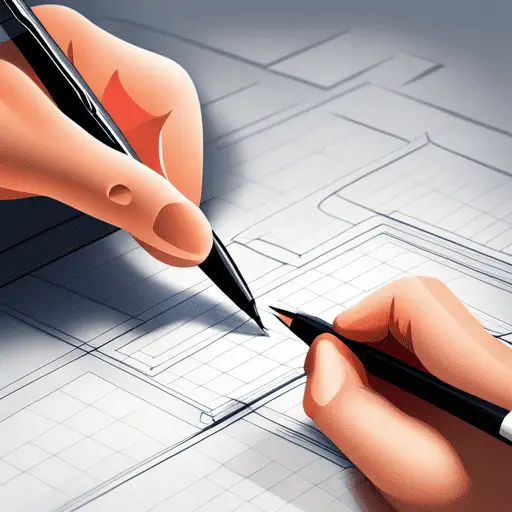
If you’re looking for a pencil to deliver precision and detail work, technical drawing pencils are an excellent choice.
These pencils come in various lead widths so that you can choose the perfect one for your needs.
Whether creating technical drawings or illustrations, technical drawing pencils will help you achieve smooth and consistent lines essential for producing top-quality work.
So, if you’re serious about your craft, invest in a set of technical drawing pencils today!
Excellent for Precision and Detail Work
You’ll love how these pencils allow you to create intricate and delicate lines easily. Precision pencils are excellent for achieving fine details in your sketches.
As an artist, you understand the benefits of using precision pencils to create the perfect lines, curves, and shapes in your drawings. With these pencils, you can achieve a level of precision unmatched by any other pencil.
You can use several techniques to achieve precise details in your sketches. One of the most important is to use the right kind of pencil. Precision pencils are specially designed to create fine lines and details, making them perfect for creating intricate drawings.
Another technique is to hold the pencil correctly, using a light touch to create delicate lines. Combined with the right tools, these techniques will allow you to create stunning works of art.
These precision pencils are available in various lead widths, allowing you to choose the perfect size for your sketching needs. No matter what kind of details you want to create, there is a precision pencil that is perfect for the job.
With their precise lines and intricate details, these pencils are a must-have for any serious artist.
Available in a variety of Lead Widths
Moving on from the precision and detail work that the previous subtopic focused on, let’s talk about the lead widths that these top pencils offer. Whether you love to sketch or are a professional artist, having the right lead width can make all the difference in your work. Luckily, these best sketching pencils are available in various lead widths, making them versatile tools for any artist.
Different lead widths can produce different effects and shading techniques, allowing you to add depth and dimension to your sketches. A harder lead, such as an H or 2H, is great for light sketching and precise lines, while a softer lead, like a 2B or 4B, is perfect for shading and creating darker tones. With a range of lead hardness and widths, you can experiment and find the perfect combination for your style. Check out the table below for a breakdown of the lead widths available in these top pencils:
| Lead Width | Effect | Recommended For |
|---|---|---|
| 9H-7H | Very light, precise lines | Technical drawing |
| 6H-4H | Light, fine lines | General Drawing |
| 3H-H | Medium-hard, clean lines | Fine points, sharp lines |
| F | Fine point, sharp lines | Detailed work |
| B-9B | Soft, dark lines | Shading, toning |
Now that you know the different lead widths available, you can experiment and find the perfect pencil for your next sketch. But before we move on, let’s discuss another important aspect of sketching: smooth and consistent lines for technical drawings and illustrations.
Smooth and Consistent Lines for Technical Drawings and Illustrations
Achieving smooth and consistent lines is crucial for creating precise technical drawings and illustrations; these pencils offer the right balance of hardness and softness to make it happen. Sketching techniques and shading tips can be greatly enhanced using a pencil with a smooth lead that effortlessly glides across the page.
These top-of-the-line pencils are designed to provide a comfortable grip and consistent lead flow for uninterrupted creativity. To help you understand why these pencils are some of the best for sketching, here are three key benefits to consider:
- The lead is designed to produce crisp lines perfect for technical drawings and illustrations.
- The smoothness of the lead allows for easy blending and shading, making it ideal for creating realistic textures and gradients.
- With a range of lead widths available, these pencils offer versatility for any sketching project. You can always achieve the perfect line thickness, from fine details to bold strokes.
Whether you’re a professional artist or a beginner, these pencils will help elevate your sketches to the next level. So, grab a set and start exploring all the possibilities of creating smooth and consistent lines.
Frequently Asked Questions
Conclusion
Congratulations, you’ve reached the end of our guide to the best sketching pencils! By now, you better understand the different types of pencils available to artists and which ones might suit your needs best.
Whether you prefer the traditional feel of wooden pencils, the convenience of mechanical pencils, the vibrant colors of colored pencils, or the dark tones of graphite and charcoal pencils, there’s a pencil out there for you.
Imagine holding your favorite pencil in your hand, the smooth texture of the lead gliding effortlessly across the page as you bring your sketches to life. The moment when you step back and admire your finished work, the satisfaction of knowing that you created something beautiful and unique with your own hands.
That’s the magic of sketching, and the right pencil can make all the difference. So try out a few different types of pencils and see which one speaks to you. Your next masterpiece awaits!
